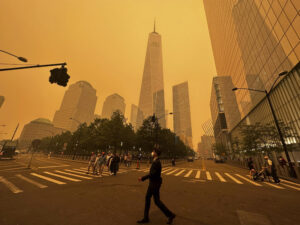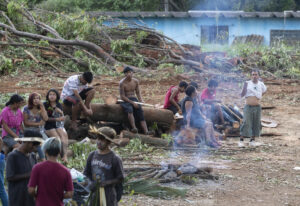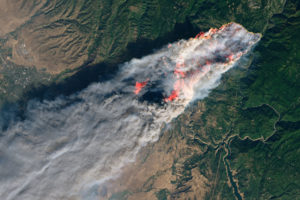Current Trends Follow Book Predicting Global Collapse
Research from the University of Melbourne found forecasts made in the 1972 book "Limits to Growth" regarding resource use, population growth, industrial output and other factors of the world's economy and ecosystems to be accurate.
Research from the University of Melbourne found forecasts made in the 1972 book “Limits to Growth” regarding resource use, population growth, industrial output and other factors of the world’s economy and ecosystems to be accurate.
At The Guardian on Monday, researchers Graham Turner and Cathy Alexander explained the purpose of the project they reviewed, which was commissioned by a think tank called the Club of Rome over 40 years ago.
The task was very ambitious. The team tracked industrialisation, population, food, use of resources, and pollution. They modelled data up to 1970, then developed a range of scenarios out to 2100, depending on whether humanity took serious action on environmental and resource issues. If that didn’t happen, the model predicted “overshoot and collapse” – in the economy, environment and population – before 2070. This was called the “business-as-usual” scenario.
The book’s central point, much criticised since, is that “the earth is finite” and the quest for unlimited growth in population, material goods etc would eventually lead to a crash.
Were those researchers right, today’s scholars asked. Using data collected by the U.N. and from the U.S. National Oceanic and Atmospheric Administration, Turner and Alexander’s team checked the scenarios after 40 years. The new data was plotted alongside the “business-as-usual” predictions made in “Limits to Growth.” (See the charts here.)
“The results show that the world is tracking pretty closely to the ‘Limits to Growth’ ‘business-as-usual’ scenario,” the researchers wrote. “The data doesn’t match up with other scenarios.”
If the predictions are correct, what happens next? Turner and Alexander continue:
According to the book, to feed the continued growth in industrial output there must be ever-increasing use of resources. But resources become more expensive to obtain as they are used up. As more and more capital goes towards resource extraction, industrial output per capita starts to fall – in the book, from about 2015.
As pollution mounts and industrial input into agriculture falls, food production per capita falls. Health and education services are cut back, and that combines to bring about a rise in the death rate from about 2020. Global population begins to fall from about 2030, by about half a billion people per decade. Living conditions fall to levels similar to the early 1900s.
As of 2010, the latter-day research team had not found proof of collapse, but “Limits to Growth” delays those effects until between 2015 and 2030. The researchers point to the world financial collapse of 2007-08 and the subsequent economic trouble as suggestions that the first stages of decline may have already begun.
Turner and Alexander say their research does not indicate worldwide economic, environmental and population collapse is a certainty. Nor do they claim the future will unfold exactly as the “Limits to Growth” researchers predicted. The breakout of wars or the emergence of “genuine environmental leadership” could dramatically affect what happens.
Turner and Alexander end their article by quoting a paragraph from the conclusion of “Limits to Growth”:
If the present growth trends in world population, industrialisation, pollution, food production, and resource depletion continue unchanged, the limits to growth on this planet will be reached sometime within the next one hundred years. The most probable result will be a rather sudden and uncontrollable decline in both population and industrial capacity.
Read more and see Turner and Alexander’s charts here.
— Posted by Alexander Reed Kelly
Your support matters…Independent journalism is under threat and overshadowed by heavily funded mainstream media.
You can help level the playing field. Become a member.
Your tax-deductible contribution keeps us digging beneath the headlines to give you thought-provoking, investigative reporting and analysis that unearths what's really happening- without compromise.
Give today to support our courageous, independent journalists.









You need to be a supporter to comment.
There are currently no responses to this article.
Be the first to respond.